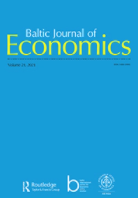Are we there yet? Intergenerational mobility and economic assimilation of second-generation immigrants in Estonia
Are we there yet? Intergenerational mobility and economic assimilation of second-generation immigrants in Estonia
Author(s): Laura Helena Kivi, Janno Järve, Sten Anspal, Marko Sõmer, Indrek SeppoSubject(s): Labor relations, Migration Studies, Socio-Economic Research, Asylum, Refugees, Migration as Policy-fields
Published by: BICEPS/SSE Riga
Keywords: Intergenerational mobility; immigrants; income gap; decomposition;
Summary/Abstract: This study investigates the role of intergenerational mobility in explaining the native-immigrant income gap in Estonia. A rich registry dataset on yearly earnings and different background characteristics for the period of 2007–2017 is used. We find that an increase of 1 percentile in parent income rank is associated with on average 0.2 percentile increase in child income rank for both natives and second-generation immigrants. Results from a detailed Blinder-Oaxaca decomposition indicate that up to 21% of the gap between income ranks of second-generation immigrants and natives is related to differences in parental background. Once we control for education, family, residence and industry related choices, differences in the parental income rank account for around 8% of the overall gap. The results indicate that although the intergenerational income mobility is relatively high in Estonia both for natives and children of foreign-born, the native-immigrant earnings gap has not decreased for the second generation.
Journal: Baltic Journal of Economics
- Issue Year: 21/2021
- Issue No: 2
- Page Range: 158-183
- Page Count: 26
- Language: English

